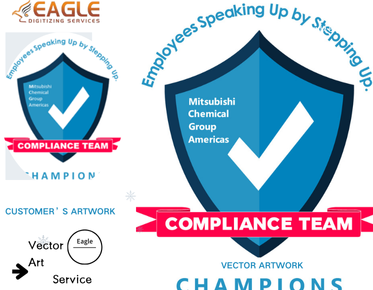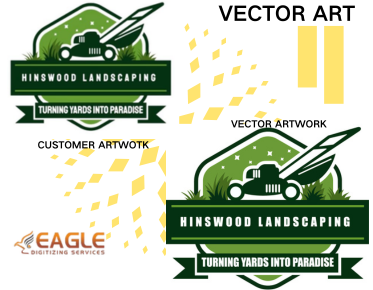Handling Low-Resolution Images for Clear Embroidery and Vector Graphics
In the realm of design and printing, handling low-resolution images can be quite a challenge. Whether it's transforming a beloved photograph into a striking embroidery pattern or converting sketches into scalable vector graphics, the process demands precision and expertise. This blog delves into effective strategies to achieve clarity in embroidery patterns and vector graphics from low-res images.
Understanding the Challenges of Low-Resolution Images
Low-resolution images often result in pixelation and a lack of sharpness when enlarged. These images are made up of pixels, which can become visible as blocky squares when the image is stretched beyond its original size. For anyone wishing to create neat embroidery patterns or crisp vector graphics, overcoming these pixel-based limitations is key.
Technological Solutions for Image Enhancement
Several advanced software solutions have emerged to assist designers in enhancing low-resolution images. For instance, raster to vector conversion technology can transform pixel layouts into line drawings, which are more suitable for scaling. Tools like Adobe Illustrator and CorelDRAW are industry standards for vectorizing images, allowing designers to recreate artwork that is both infinitely scalable and print-ready.
Vector conversion is the magic bullet that helps bring clarity to low-resolution images. By defining clear-cut lines and smooth shapes, vector files eliminate issues of pixelation, enabling designers to scale images without sacrificing quality. Services such as vector-conversions.com provide comprehensive vectorization solutions tailored to various project needs.
Eagle Digitizing: A Leader in Vector and Digitizing Services
When it comes to transforming images into high-quality digital formats, Eagle Digitizing stands out with its exceptional attention to detail and fast turnaround times. Their expert team offers a wide range of services, including raster to vector conversion, background removal, and vector logo design. Eagle Digitizing prides itself on customer satisfaction, delivering professional results that cater to both marketing and artistic applications.
Eagle Digitizing's services are especially valuable for small to midsize businesses needing efficient and reliable artwork conversion for various printing techniques such as screen printing, laser printing, and embroidery. Their ability to convert logos and complex designs into scalable vector files has made them a trusted partner for many businesses【4:0†source】.
Embroidery Applications: Turning Low-Resolution Images into Patterns
In embroidery, the goal is to transform flat, digital images into dynamic stitched patterns. This process, known as embroidery digitizing, involves converting image files into stitch files that a sewing machine can interpret. By mapping out the image as a series of stitches, embroiderers can create intricate designs on textile surfaces without losing any details from the original artwork.
Superior digitizing services, like those offered by Eagle Digitizing, incorporate advanced techniques to ensure stitch accuracy and vibrant color reproduction. This attention to detail is crucial in producing embroidery patterns that truly reflect the essence of the original image. Their expertise in this field helps preserve the integrity of images, offering tailor-made solutions for custom apparel, promotional items, and more.
From Sketch to Vector: Achieving Clarity in Design
Converting sketches or low-resolution designs into vector graphics involves a meticulous process of tracing and defining the image structure. This conversion, often called vectorization, transforms artwork into a format that can be resized without loss of quality. Vectors are particularly effective for logos, icons, and other design elements requiring clean, sharp lines.
Services such as online vector conversion are indispensable for designers looking to enhance the quality of their images digitally. They enable designers to take control of image layers and colors, ensuring that each element of the artwork is perfectly rendered. This process often includes meticulous adjustments for colors and layers, creating a masterpiece that stands the test of scalability【4:3†source】.
Future Prospects and Innovations
As technology advances, the tools and techniques for converting low-resolution images into printable, scalable formats continue to evolve. The future holds exciting possibilities with the integration of AI technologies in image processing, which promises further improvements in speed and accuracy. Innovations will likely focus on automating and refining the vectorization and digitizing processes, making these services more accessible to individuals and smaller businesses.
The world of design is constantly expanding, offering more possibilities for artists and businesses alike. With the right tools and partners, anyone can transform their creative visions into reality, irrespective of the limitations imposed by low-resolution images. The challenge now lies in harnessing these advancements to break new ground in visual and graphic design【4:4†source】.



